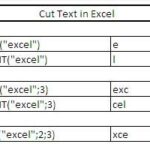How to Convert JPG to Excel: A Simple Guide
Converting a JPG image into an Excel spreadsheet can be incredibly useful, especially when dealing with scanned documents or images containing tables and data.
Optical Character Recognition (OCR) technology bridges the gap between physical documents and digital spreadsheets. It lets you extract text and numbers from images like scanned documents and photos containing tables, converting them into editable Excel files.
Step 1: Choose an OCR Tool or Service
To get started, you’ll need an OCR tool that can recognize text in images and convert it to a format Excel can understand. There are two main options: software applications and online services. Software like Adobe Acrobat or ABBYY FineReader often provides more features and better security for sensitive data.
Online services like OnlineOCR.net or OCR.space are convenient and don’t require installation, making them ideal for quick one-off conversions. Consider your needs when choosing between the two.
Step 2: Convert the JPG Image to Excel Format
Begin by launching the OCR tool you have chosen, either by opening the software or navigating to the online service’s website. Upload the JPG file you wish to convert by clicking on the “Upload” or “Open” button and browsing your computer to select the image.
After uploading the file, set the conversion parameters. Ensure the OCR tool is set to recognize the language used in your image and choose an output format compatible with Excel, such as .xlsx or .csv.
Initiate the conversion by clicking on the “Convert”, “Start” or a similar button, and wait for the tool to process the image and extract the data.
Step 3: Import the Data into Excel
Once the conversion is complete, download the converted file if you’re using an online service. For software applications, the file may be saved automatically in a designated folder. Open the file in Excel. If the file is already in Excel format, you can double-click it to open it directly. If it’s in CSV or text format, open Excel, go to the “Data” tab, and select “From Text/CSV”, then follow the prompts to import the data.
Organize the data as needed by using the “Text to Columns” feature under the “Data” tab if the data isn’t properly separated. Adjust columns, rows, and cell formatting to suit your requirements.
Step 4: Review and Edit the Data
After importing the data, it’s essential to verify its accuracy. Scan through the content to identify any errors or misinterpretations that may have occurred during the OCR process. Manually correct any incorrect text or numbers. Enhance the formatting by adjusting column widths, fonts, and cell alignments. You may also apply formulas or functions if necessary to further refine the spreadsheet.
Using high-quality images significantly improves OCR accuracy, so ensure your JPG files are clear and high-resolution.
After reviewing and editing, you can now save your converted Excel spreadsheet and use the data for further analysis or tasks.



